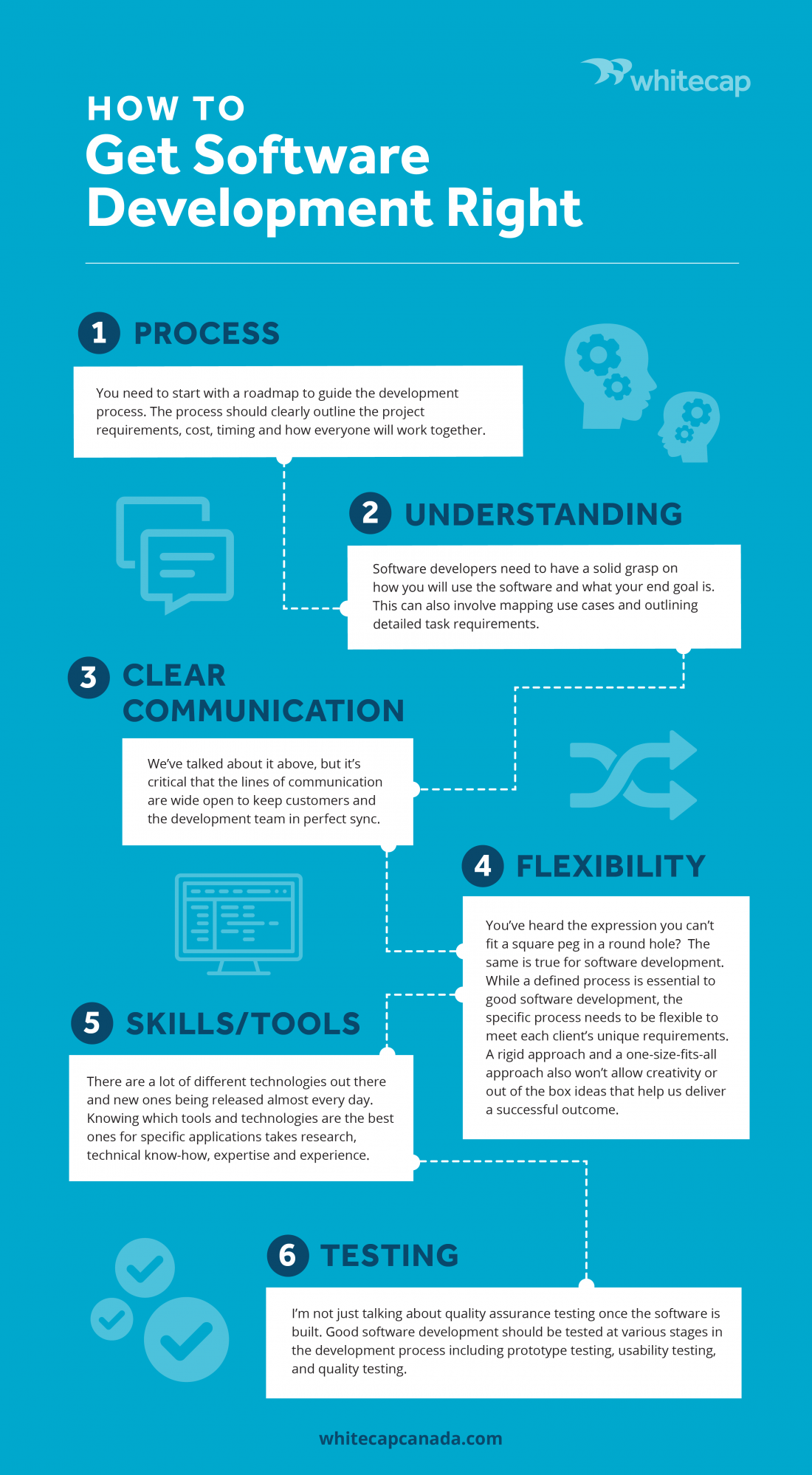When it comes to developing custom software, two things can make the difference between a successful project and one that’s doomed to failure:
Communication & Planning
To be very good at custom software development, I believe you have to be good at reading people. To be able to quickly recognize how your client takes in information and then you have to be able to adapt your approach to meet their specific communication and learning styles. For example, some people are visual and need to see something before they know if it’s what they want; others need to read details to understand it; and still others are auditory, needing to have concepts explained verbally.
Why is communication so important? Software and technology are complicated!! Explaining how the user experience, design, code, plug-ins, add-ons, and databases all come together to create the software a company is envisioning is tough, especially if the client is new to technology or it’s their first project.
Over the years, we’ve learned that a one-size-fits-all approach doesn’t work because the way people communicate and relate to information can be very different. Becoming a chameleon and being able to adapt your approach to your customer’s communication style can help the project reach a successful conclusion.
Now, that’s not to say we don’t recommend a structured approach because we do and have developed proprietary tools to guide many aspects of the development process. But, we also have flexibility built in that allows us to tailor our approach to help our customers better understand what is being done, while making sure they have input along the way to make certain the end project meets their vision.
To kick start any new software project, we use our tried and tested software development process, which helps clients articulate and clarify their ideas or needs, and details all the requirements for the project. More often than not, this process has helped us uncover needs that even our customers didn’t realize were essential!
Once we have clear, concise requirements down on paper, we move into the development phase and deploy an entirely new range of tools to deliver on our customer’s vision while keeping everyone on the same page to minimize miscommunications and misunderstandings!
The key to knowing what process to use lies in being able to read your client, recognize their learning or communication style and tailoring your approach accordingly.
To ensure a successful software development project, a great deal of planning and communication needs to go into the requirements phase, AND the development phase.
Here’s a summary of the key elements that software developers need to bring to the table to get you started on the right foot:

While people may have horror stories about development projects gone wrong, with good planning and solid proven processes software development failures are absolutely preventable. In our last blog we highlighted three recent examples of real-life software development projects (of the many we could tell you about) that were highly successful and have helped our customers to significantly grow their business, while achieving whole new levels of productivity and efficiency.
Good planning, strong communication and good design are at the foundation of every successful project. Make sure your developer has a plan, understands your real needs and has the skills to build the right solution to help you realize your vision.